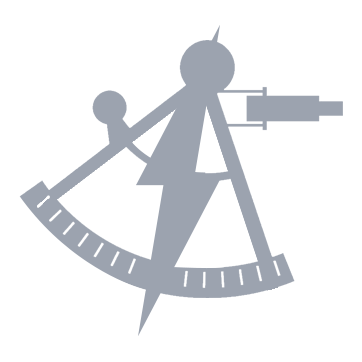‘Scylla, it’s good to hear your voice. Or, uh, Captain Borodin’s voice. You know what I mean.’
Juliette Yves’s message, audio only, drifted through Borodin’s ready room. He didn’t look up as he listened, gaze fixed on his computer console and the data streaming in from a completely different transmission.
‘We were trying to map the nebula when sensors picked up a subspace distortion. It’s not like anything what our limited records on the Synnef Nebula have picked up before, but we’re a bit deeper than most Starfleet expeditions have gone. We investigated, then… this is embarrassing. Got caught in the gravity well.’
Borodin clicked his tongue at that. ‘Maybe explorers should be more vigilant of potential threats,’ he muttered to himself.
They weren’t transmitting, and even if they were, there was still a time-delay of some hours before messages would arrive. But it was as if Yves heard him as she carried on speaking.
‘I know, I know – shoulda gone in more carefully. I underestimated the extent of the subspace distortion, but this close, we can’t maintain a stable warp field. Or we’d just jump out of the gravity well. Thing is? Distortions messing with our warp engines that badly are serious. We should have picked up completely different readings off anything this powerful, and we didn’t.’
For a moment, Borodin wondered if Yves was making excuses. But if there was one thing he expected of a Starfleet scientist, it was to treat lethal conditions as an object of awe and fascination, even if it hurt their ego. He sat up at this description of the Ranger’s situation, brow furrowing as he listened.
‘So we’re stuck here. Impulse engines alone can’t generate enough speed to escape the distortion’s gravity well. We’re burning hot to maintain our position, but it’s a losing battle. My science officer and chief engineer are obviously working on ways we can create a warp field or mega-boost our engines, but… nobody’s stumbling upon us in here. We’re just lucky we’ve got a few days before this damn hole pulls us in, ‘cos I know you’re not gonna be here fast.’
‘As fast as we can,’ Borodin murmured.
‘That’s about it. I’ll keep in touch. Let you know we’ve not broken ourselves in half trying to escape or something. But, uh, thanks for the rescue, Scylla. We’re gonna need it. Ranger out.’
The silence as Yves’s voice message ended rang a little louder in Borodin’s office than he liked. She hadn’t told him much he didn’t know already, and he suspected the chatty reply to his confirmation his ship was en route was more for her own comfort than the belief he needed briefing further. But it was not wholly without useful information.
He pinched the air in front of his monitor, pulling a file from the screen to flick it into a larger holographic projection above his desk, and cleared his throat. ‘Computer, record a reply to that message.’
At the chirp, he pressed on.
‘Captain Yves, this is Captain Borodin. Confirmed we are en route and should enter the outskirts of the Synnef Nebula within two hours. From there, we’ll need to reduce our warp factor to safely navigate conditions. I assure you, we are moving as fast as we can.’
He leaned back in the chair, eyes flashing across the records he’d projected. ‘I’m attaching a file to this transmission. Expect you already have it: findings and data from the runabout Starfall’s expedition into the Synnef Nebula, May-to-June last year. It includes navigational details from a region of space near your present location. No references to any subspace distortions detected. But it includes mentions of modifications made by the itinerant locals of the nebula to sustain warp fields in adverse conditions. Might be there’s something of use to you.’ As he spoke, he manipulated both his console and the holographic projection to attach it to the recording transmission file.
‘At present speed and course, and accommodating for expected navigational conditions further into the nebula based on all known studies of the region, we should be within immediate transmission range by tomorrow. That’s the good news. The bad news is that still puts us eight days out as we won’t safely be able to go higher than warp 4 within approximately twelve hours.’
That was half of the challenge of the Synnef Nebula; even if their scans and transmissions could pierce the conditions – which was a big if – the nature of the gases and internal turbulence meant it simply wasn’t safe to travel at much speed. What he didn’t say was that he already had Varel assessing how hot they could fly in an emergency, where pushing it for even an hour could shave crucial time off their journey, time the Ranger didn’t necessarily have. For now, Yves could prepare for the reasonable worst instead of being kept on tenterhooks for the hopeful best.
‘Keep us updated on your condition,’ Borodin carried on. ‘Consult the documents I’ve attached. We’ll speak soon. Scylla out.’ He leaned back in his chair. ‘Computer, transmit files to the USS Ranger. Include a standard request for confirmation of receipt.’ That still meant it would be some hours before he’d hear back. But it was better than firing his messages into the unknown, with no guarantee they’d been received until Yves had assembled another rambling status update.
‘Message transmitted.’
He rubbed his eyes. Sat up. And went back to studying the file he’d attached to his transmission. Starfleet officers had spent weeks in the nebula, working and living alongside the strange transients who made it their home, far from the prying eyes of the rest of the galaxy. Surely there were answers here.
It wasn’t much. But for all his long years responding to crises, serving under dangerous conditions, Teodor Borodin had never mastered the art of waiting.

 Bravo Fleet
Bravo Fleet






